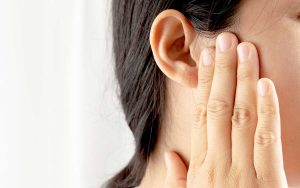
Earwax might not be the most glamorous topic, but it plays an important role in keeping your ears healthy. Unlike your teeth, feet, or other body parts that require regular cleaning efforts, earwax usually takes care of itself. In fact, trying to remove it too often can do more harm than good. So, is earwax bad? The short answer is no, but it can sometimes become problematic. Here’s what you should know.
What Is Earwax?
Earwax, medically known as cerumen, is a natural substance made by glands inside your ear canal. It’s a combination of secretions and dead skin cells, and despite its reputation, earwax is actually beneficial. Its main job? Protecting your ears.
Earwax acts like a barrier, trapping dust, dirt, and bacteria before they can reach your eardrum. It also helps keep your ear canal moisturized and healthy, preventing dryness and irritation. Without it, your ears would be more prone to infection and damage.
Do You Need to Clean Your Ears?
In most cases, no special cleaning is needed. Your ears are designed to clean themselves out. Everyday activities—like chewing, talking, showering, and moving around—help push old wax to the surface, where it naturally flakes or washes away.
Most children and adults never need to worry about removing earwax. But for some, it can build up and become an issue.
When Earwax Becomes a Problem
While earwax is usually a friend to our bodies, there are times it can cause trouble, especially if it becomes impacted (blocked or pushed too far into the ear canal).
Here’s when earwax might develop into a problem:
- Using cotton swabs: Many people use cotton swabs to clean their ears, but this can actually push wax deeper into the canal, creating a blockage. It’s fine to use these gently around the outer ear, but avoid inserting them into the ear canal.
- Wearing earbuds, hearing aids, or earplugs: These devices can prevent earwax from naturally working its way out of the ear, leading to buildup.
- Producing too much wax: Some people naturally produce more earwax than others, which can increase the chance of impaction.
Signs of Impacted Earwax
If earwax builds up too much, you might experience:
- Hearing loss or muffled hearing
- Tinnitus (ringing or buzzing in the ear)
- Earache or a feeling of fullness
- Dizziness or balance issues
- Odor or discharge from the ear
In some cases, impacted earwax can even lead to an infection. If you notice these symptoms, it’s time to get some help.
Safe Earwax Removal: Leave It to the Pros
It’s best to see a professional if you’re dealing with earwax buildup. Your primary care provider, hearing specialist, or ENT (ear, nose, and throat) doctor can safely and comfortably remove it in the office. Some people try home remedies like over-the-counter ear drops or ear irrigation kits. These can sometimes be effective, but it’s smart to check with your provider first—especially if you’ve had ear surgery, you have a history of ear infections, or you use hearing aids.
When in Doubt, Ask
Earwax is usually a good thing, but if it’s bothering you, don’t ignore it. Our team is here to help you keep your ears healthy and your hearing clear with professional ear cleaning services. Contact us to schedule an appointment if you’re concerned about earwax buildup or any changes in your hearing.